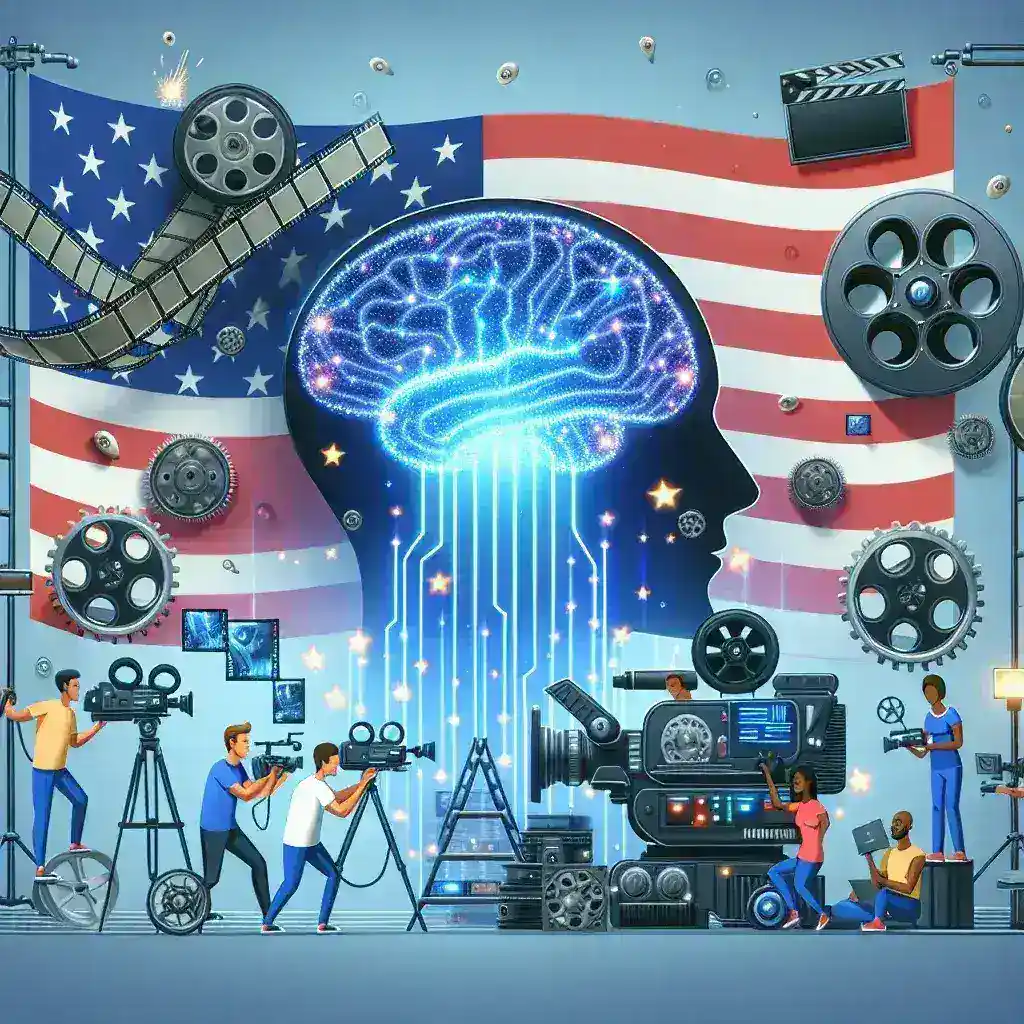Introduction
In the ever-evolving landscape of digital entertainment, Netflix continues to push the boundaries of creativity and technology. The streaming giant has recently announced its pilot project that utilizes artificial intelligence (AI) to generate alternate scenes for U.S. shows. This innovative approach aims to enhance viewer engagement and provide a personalized viewing experience that caters to diverse audience preferences.
The Power of AI in Media
Artificial intelligence has revolutionized various industries, and media is no exception. With the ability to analyze vast amounts of data, AI can identify viewer preferences, optimize content delivery, and even create new forms of storytelling. Netflix’s initiative to pilot AI-powered alternate scene generation is a testament to the growing role of AI in shaping the future of entertainment.
What is Alternate Scene Generation?
Alternate scene generation refers to the process of creating different versions of a specific scene within a show. This could involve variations in dialogue, character interactions, or even plot outcomes. By offering multiple takes on a scene, Netflix aims to enhance viewer engagement, allowing audiences to experience a storyline from different angles.
How Does It Work?
The technology behind AI-powered alternate scene generation involves complex algorithms that analyze existing footage and scripts. Machine learning models are trained on a vast library of content, allowing them to understand narrative structures, character dynamics, and emotional arcs. Once trained, these models can generate new scenes that align with the established tone and style of the original content.
Benefits of AI-Powered Scene Generation
- Personalized Viewing Experience: By providing viewers with alternate scenes, Netflix allows for a more tailored experience, catering to individual preferences and tastes.
- Enhanced Storytelling: Different scenes can offer various perspectives, enriching the narrative and keeping audiences engaged.
- Increased Replay Value: Viewers may return to a show multiple times to explore different outcomes, increasing overall engagement and viewership metrics.
- Creative Freedom: Writers and directors can experiment with alternate scenarios, providing new creative outlets and enhancing storytelling possibilities.
Historical Context
Netflix’s foray into AI-powered content creation is not entirely new. The company has been leveraging machine learning for recommendation algorithms for years. However, the idea of generating alternate scenes represents a significant leap forward, combining deep learning with creative storytelling.
The Evolution of Streaming Services
As streaming services have gained popularity, competition has intensified. Netflix has consistently been at the forefront of innovation, from its original programming to its user-friendly interface. The introduction of AI-generated content could serve as a game changer, setting Netflix apart in a saturated market.
Future Predictions
As Netflix continues to pilot this feature, the potential applications of AI in content creation are vast. Future developments may include:
- Interactive Storytelling: Viewers could choose different paths within a narrative, leading to unique viewing experiences.
- Real-Time Scene Adjustments: AI could analyze viewer reactions and modify scenes in real-time to enhance engagement.
- Localized Versions: Alternate scenes could be tailored for different cultural contexts, making content more relatable to diverse audiences.
Pros and Cons
Pros
- Innovation: The use of AI in storytelling represents a significant advancement in media technology.
- Audience Engagement: Providing alternate scenes can increase viewer retention and satisfaction.
- New Opportunities for Creatives: Writers and directors have a fresh canvas to explore narratives.
Cons
- Quality Control: Ensuring the AI-generated content meets quality standards can be challenging.
- Viewer Overload: Too many options may overwhelm viewers, leading to decision fatigue.
- Ethical Concerns: The use of AI in creative processes raises questions about authorship and originality.
Real Examples
While Netflix’s pilot program is still in its infancy, other forms of AI-generated content have already emerged. For instance, some video games use AI to create dynamic storylines based on player choices, allowing for a unique experience with each playthrough. Similarly, AI-generated music has gained traction, showcasing the versatility of this technology across creative fields.
Cultural Relevance
In an age where personalization is paramount, Netflix’s initiative aligns with the cultural shift towards individualized content consumption. The ability to choose alternate scenes taps into the desire for control over one’s entertainment experience, catering to viewers’ specific tastes and preferences.
Conclusion
Netflix’s pilot of AI-powered alternate scene generation represents a remarkable step forward in the intersection of technology and storytelling. By harnessing the power of artificial intelligence, the streaming giant is not only redefining the viewing experience but also paving the way for a new era of immersive, personalized entertainment. As this initiative unfolds, it will be fascinating to observe its impact on audience engagement and the broader landscape of digital media.

